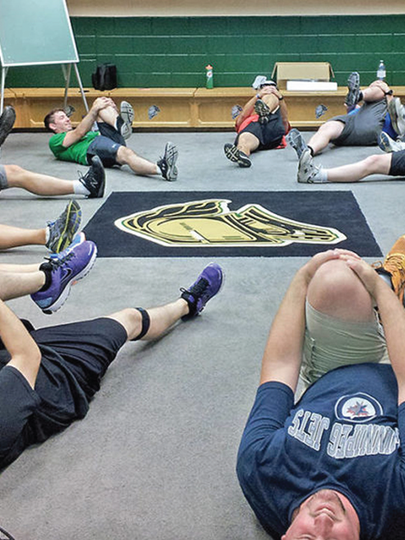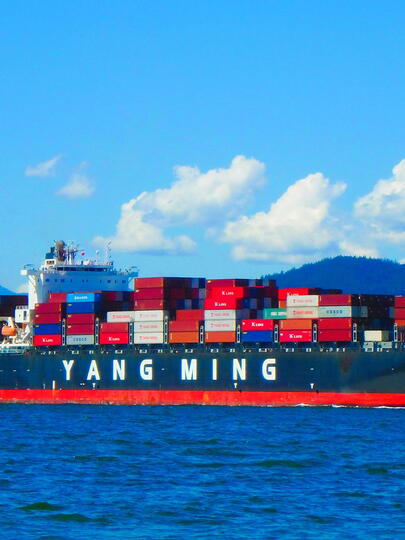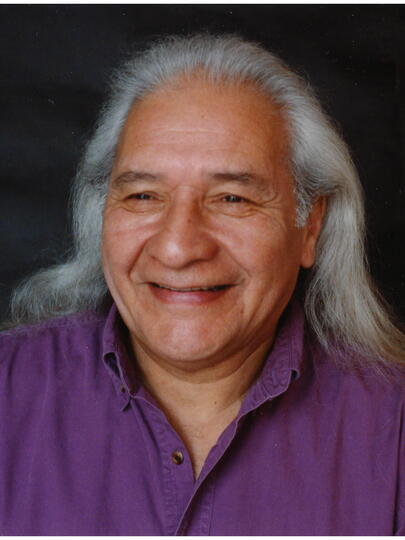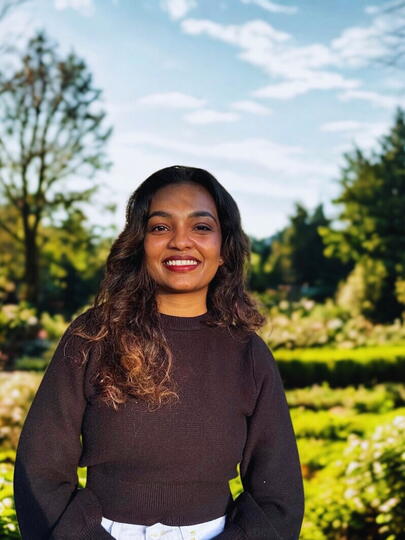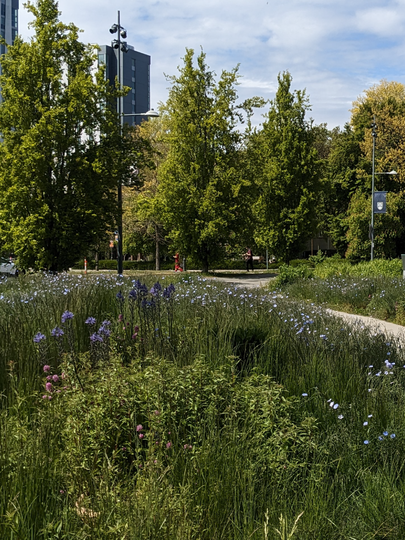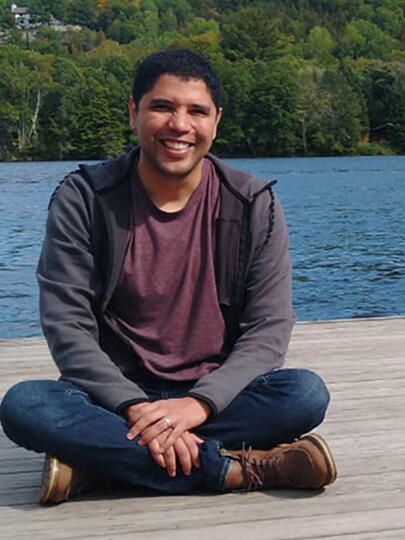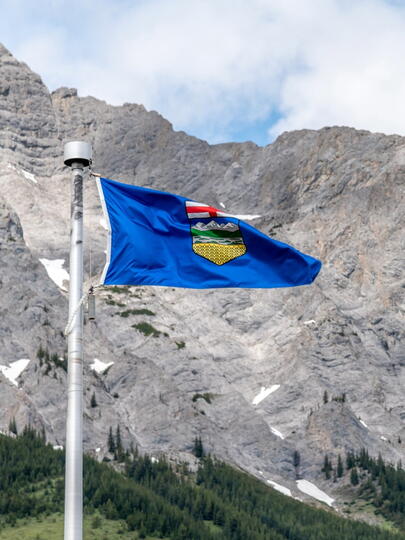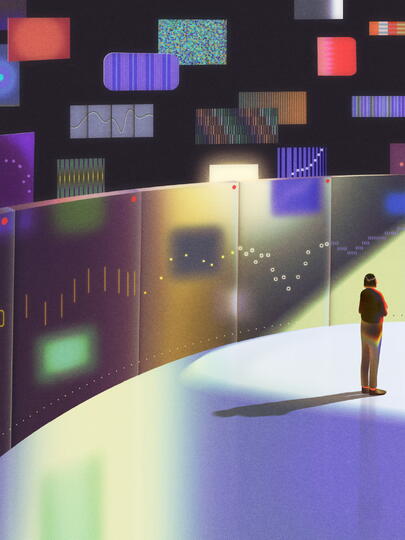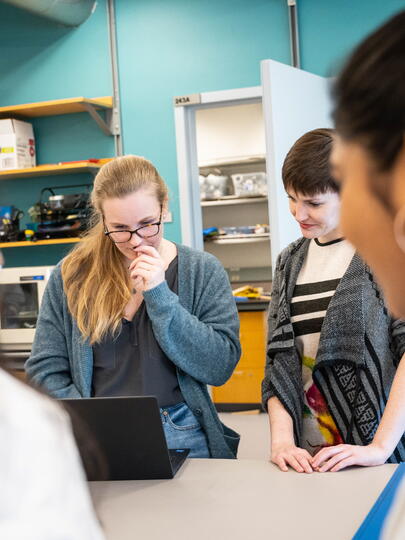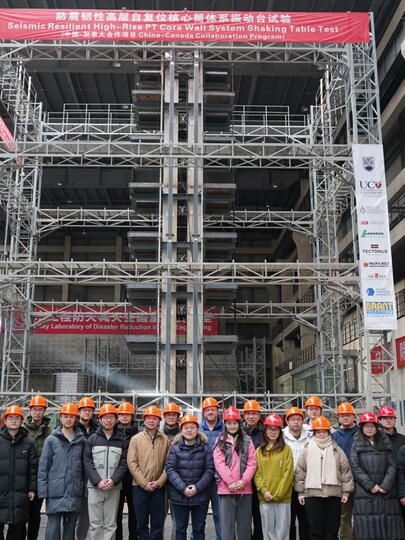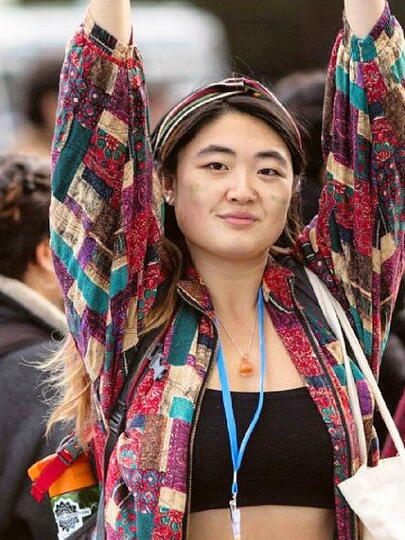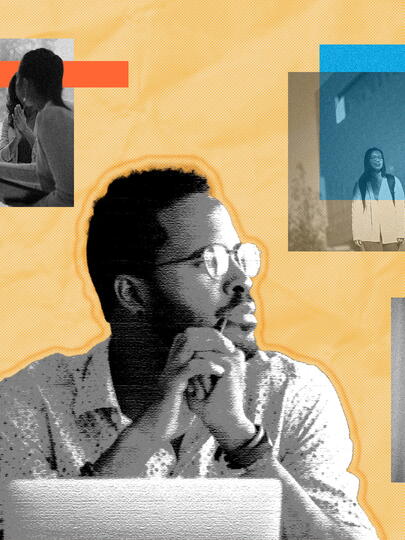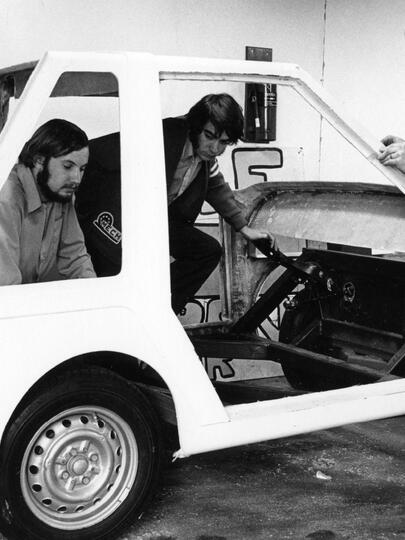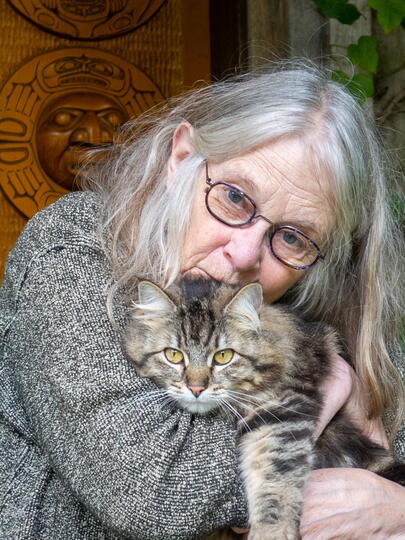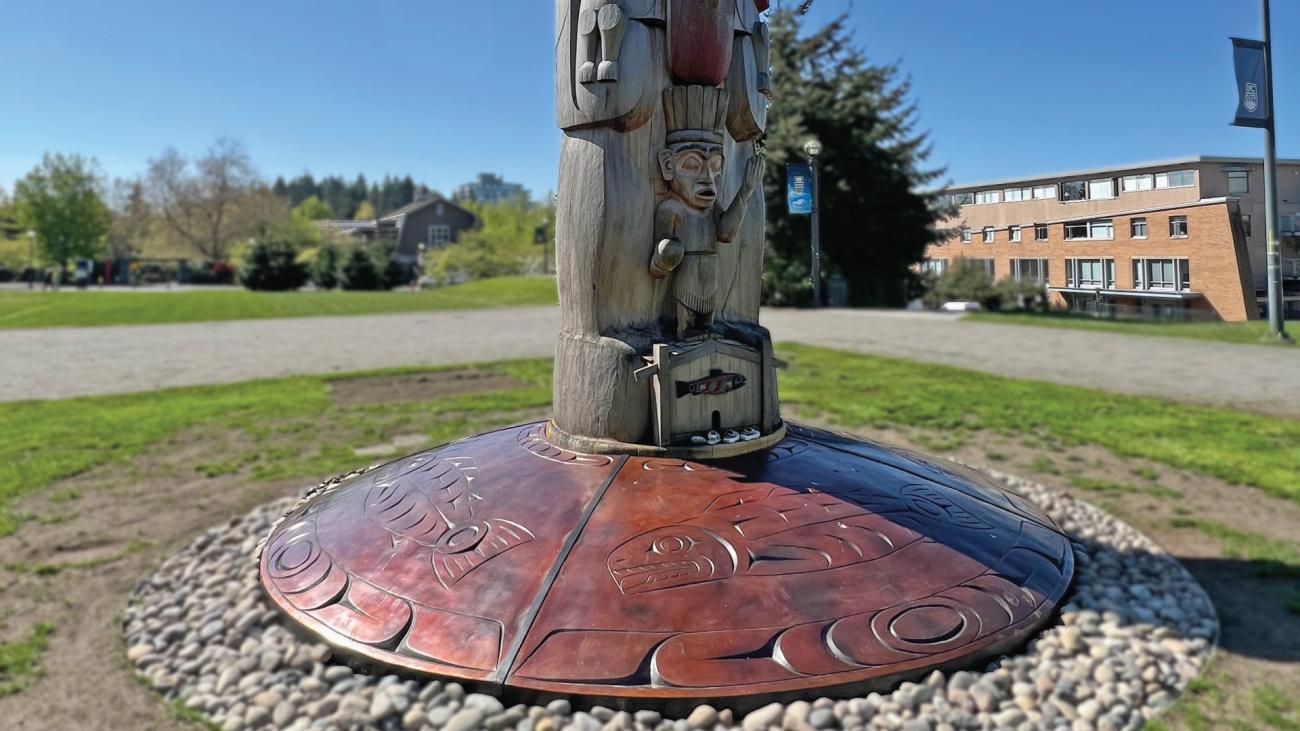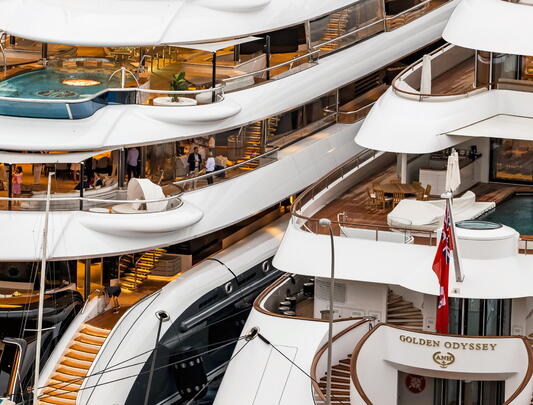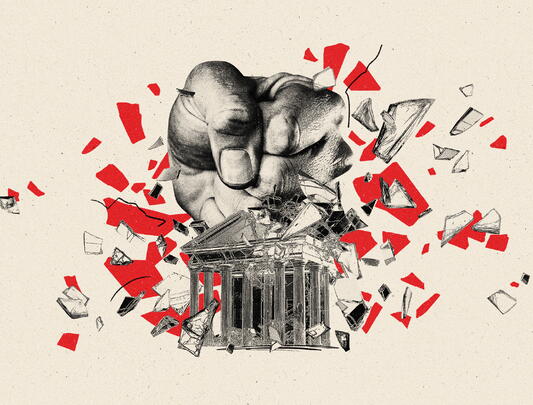New art connects The Reconciliation Pole to Musqueam territory
A new large-scale bronze artwork co-created by xʷməθkʷəy̓əm (Musqueam) master carver Kayám̓ Richard Campbell and Haida master carver and hereditary chief James Hart, 7idansuu (Edenshaw) now anchors Hart’s The Reconciliation Pole (2015-17) to Musqueam territory.
The new art, titled θəʔit, was commissioned with support from the Audain Foundation and the University of British Columbia.
The 15-foot-wide disc depicts four salmon carved by Campbell. The artwork name θəʔit translates to truth in English, which acknowledges the continued need for Indigenous peoples’ truths to be uncovered and remembered.

The Reconciliation Pole tells the story of the time before, during, and after the residential school system and symbolizes the path toward reconciliation between Indigenous and non-Indigenous peoples in Canada. It was installed at UBC’s Vancouver campus in 2017 at a large celebration that included ceremony held in accordance to Haida cultural protocols.
As part of his vision for The Reconciliation Pole, Hart invited Campbell to design and carve the artwork for the bronze disc. The new artwork acknowledges that the pole — which was carved and raised according to Haida tradition — stands on Musqueam ancestral territory.
Kayám̓ Richard Campbell is a Musqueam Elder, knowledge holder, archaeologist, master carver, and residential school survivor. He was raised in Musqueam with traditional cultural teachings, and first learned to carve from his grandfather and uncles.
Carving professionally since 1979, Kayám̓ trained and collaborated primarily with Wallace Baker (Squamish) in his early career, eventually transitioning from traditional Musqueam design into a contemporary, interpretative style. He specializes in private commissions for largescale yellow cedar carvings, and is still frequently asked to carve items for many of Musqueam’s community and ceremonial events.
Since 1998, Campbell has been a field technician with Musqueam’s archaeology department. He now brings his cultural knowledge to the role of full-time senior archaeological field technician and works with partners throughout Musqueam territory to ensure Musqueam’s heritage is protected and respectfully managed. Kayám̓ is the proud father of six and grandfather of nine, all of whom were born and raised in Musqueam.
“θəʔit is a special project to me for many reasons. It is important that Musqueam art and design is shown on Musqueam territory because it shows that we are here, and it shows who we are,” Kayám̓ Richard Campbell said. “By anchoring Jim’s Haida pole, θəʔit is setting a strong foundation to connect The Reconciliation Pole to the land it stands on for generations to come. It is emotionally meaningful for me to represent Musqueam in this way, and to honour all those who attended Indian residential schools.”
“Musqueam’s cultural protocols guide much of our daily lives, and is the foundation of who we are. Although we have maintained many of these teachings over thousands of years, many are lost forever because generations of Musqueam children were forcibly removed from our community to attend residential schools,” said yəχʷyaχʷələq, Musqueam Chief Wayne Sparrow. “Kayám̓ embodies the spirit of resiliency that has enabled Musqueam to not only continue our cultural practices, but strengthen them by bringing pride to his family and community.”
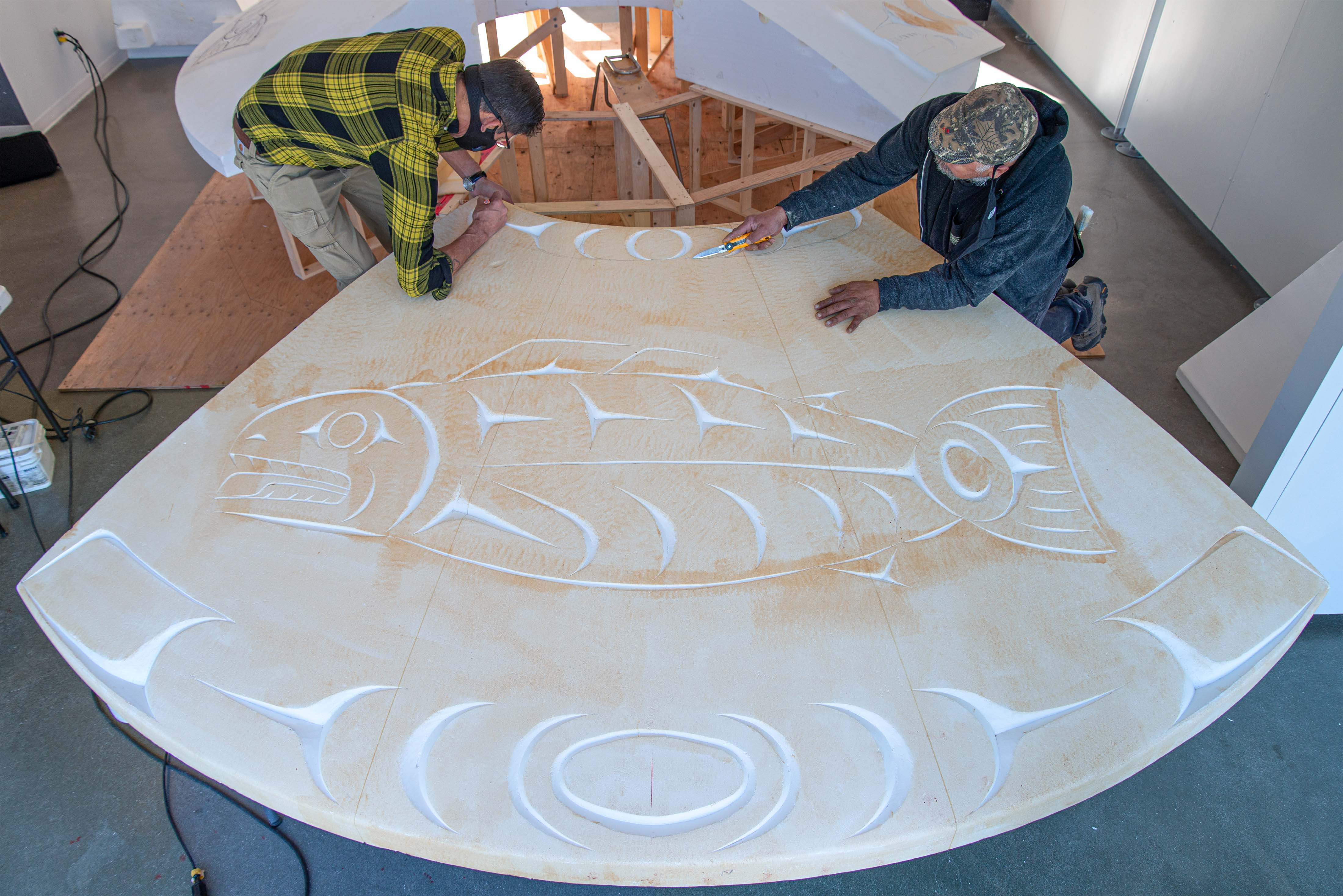
To bring the new artwork to life, Campbell and Hart also collaborated with artist Max Chickite (Lekwiltok, Kwakwaka’wakw), with support from the Morris and Helen Belkin Art Gallery and the Department of Art History, Visual Art, and Theory (AVHA) at UBC.
Campbell drew the initial design in 2D, which was then enlarged and applied to an at-scale high density foam to carve his design into. The panels were then transported to the Burton Bronze Foundry on Salt Spring Island to begin the process of having it cast in bronze. The bronze panels were then taken back to UBC and installed in sections at the base of The Reconciliation Pole.
“The Bronze Disc pays respect to the Musqueam people, whose territory the pole stands on. It was wonderful to have a Musqueam artist, Richard Campbell, do the carving,” Hart said. “The Reconciliation Pole was carved in Haida tradition, but the meaning of the pole is for everyone. People leave offerings at the base of the pole — I hope that carries on. This helps with bringing attention to the whole story of the residential schools and hope for the future.”
“The Audain Foundation is grateful to Richard Campbell and James Hart for the opportunity to participate in reconciliation through art,” said Michael Audain, Chair of the Audain Foundation and Honorary Chair of FORWARD, the campaign for UBC.
While the new artwork completes the physical form of The Reconciliation Pole, it invites continued reflection on UBC’s relationship with Musqueam and what it means to work towards truth, reconciliation, and decolonization as settlers on traditional Musqueam territory.
θəʔit highlights the importance of collaboration with Musqueam on new Indigenous public art and strengthens the university’s commitment to expand the presence of Musqueam art and culture on campus, as part of goal five of UBC’s Indigenous Strategic Plan (2020).
In addition to θəʔit, Musqueam art was unveiled in March of this year as a secondary logo for the UBC Thunderbirds, while in 2022, five new UBC student residence buildings were gifted hən̓q̓əmin̓əm̓ names.
“The Reconciliation Pole is a powerful reminder of the legacy of the residential school system, and the deep work of reconciliation we must all undertake,” said Dr. Deborah Buszard, interim president and vice-chancellor of UBC. “The addition of Richard Campbell’s artwork is another important step in UBC’s ongoing relationship with Musqueam and an opportunity to highlight Musqueam artwork and culture as visible symbols of the traditional, ancestral, and unceded lands upon which UBC’s Vancouver campus stands.
“We also gratefully acknowledge the longstanding commitment from the Audain Foundation towards this deeply meaningful installation.”

